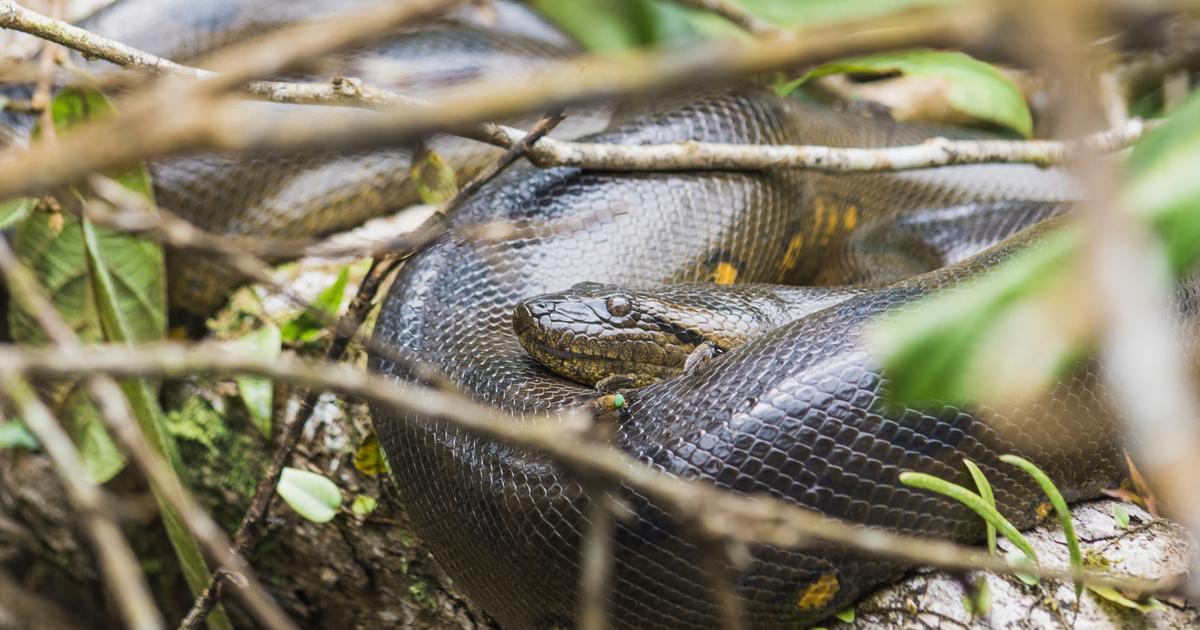North American media are excited about a surprising discovery documented during the filming of the National Geographic documentary series
Pole to Pole
hosted by actor Will Smith.
Expedition scientists say in a new study that the green anaconda, also called giant anaconda, is not one species, but two, genetically different ones.
One would live in the north of the Amazon, and the other in the south of the area.
The reptile, which can reach 8.5 meters in length, 230 kg and almost a meter in circumference, was already known, but under the name of a single species.
To date, 4 distinct species of anaconda are known, the green anaconda (the heaviest), the Bolivian anaconda, the yellow anaconda and the dark-spotted anaconda.
For around twenty years, an international team of 15 scientists cataloged each individual encountered during their expeditions, counting and identifying the different morphological characteristics, such as the number of scales.
At first glance, they found no morphological distinction between the so-called “southern” and “northern” green anaconda.
On the other hand, the researchers also looked at the genes of these individuals, and they concluded that there was a genetic divergence of 5% between the two groups.
They state in a publication in the journal
Diversity
that this divergence allows them to be distinguished into two very distinct species.
Genetic differences
This 5% genetic difference is debated within the scientific community.
Blood samples as well as DNA sequencing have been carried out, but the analyzes relate to genes not representative of the identity of individuals, believes Christophe Dufresnes, herpetologist and genetics researcher at the National Museum of Natural History in Paris.
“These genes, in this proportion, do not allow us to conclude that there is a divergence,” criticizes the latter.
“The 5% divergence does not relate to nuclear DNA, but only to a few mitochondrial DNA genes.”
Unlike nuclear DNA, which comes from both our parents, which defines sex and genetic identity, mitochondrial DNA is only transmitted through the maternal branch of individuals and actually contains few protein-coding genes.
“Mitochondrial DNA is very variable and can evolve independently of the rest of the genome; we would need a more substantial study of the evidence that the nuclear DNA genes are also different, to conclude that there are two very distinct species
,” continues Christophe Dufresnes.
Attract the light
If the first analyzes on mitochondrial DNA show a certain divergence between populations, researchers then undertake additional analyzes on nuclear DNA, the analysis of which is more expensive and more technical.
But here, the researchers did not take into account this second part of the genetic study.
“
The nuclear DNA data are ignored because they did not go in the direction of the authors,”
regrets Antoine Fouquet, researcher at the CNRS, specialist in Amazonian amphibians and reptiles.
Nothing is right, neither in substance nor in form, this article is very far from providing enough elements to describe a new species.
Furthermore, certain rules that apply when naming a species were not respected since they would have prevented the authors from doing so.
The latter were undoubtedly seeking to attract the spotlight and they unfortunately succeeded.
»
Did the MDPI company, publisher of the
Diversity
magazine , do its job correctly by requesting a critical rereading of the article from other specialists?
The two French biologists expect that other scientists will quickly publish “counter articles” in order to invalidate this announcement of a new species.
The images from the upcoming documentary series
Pole to Pole with Will Smith
that will appear on Disney+ will most likely be spectacular, but the conclusions of the anaconda chapter will certainly not end up in biology books.

